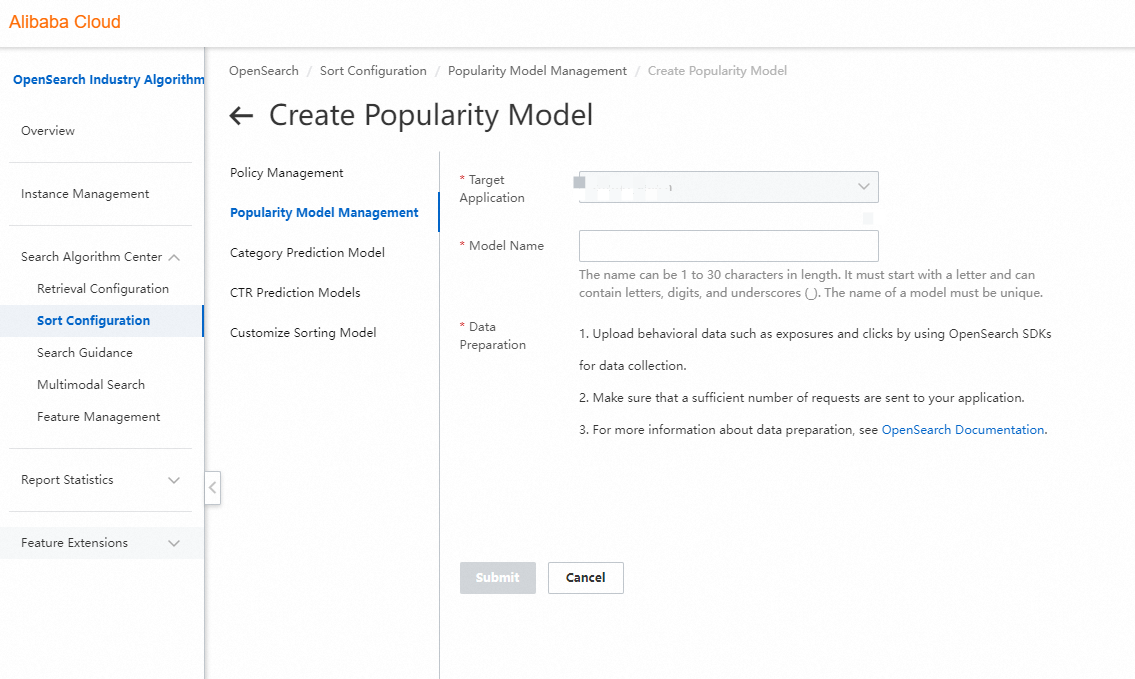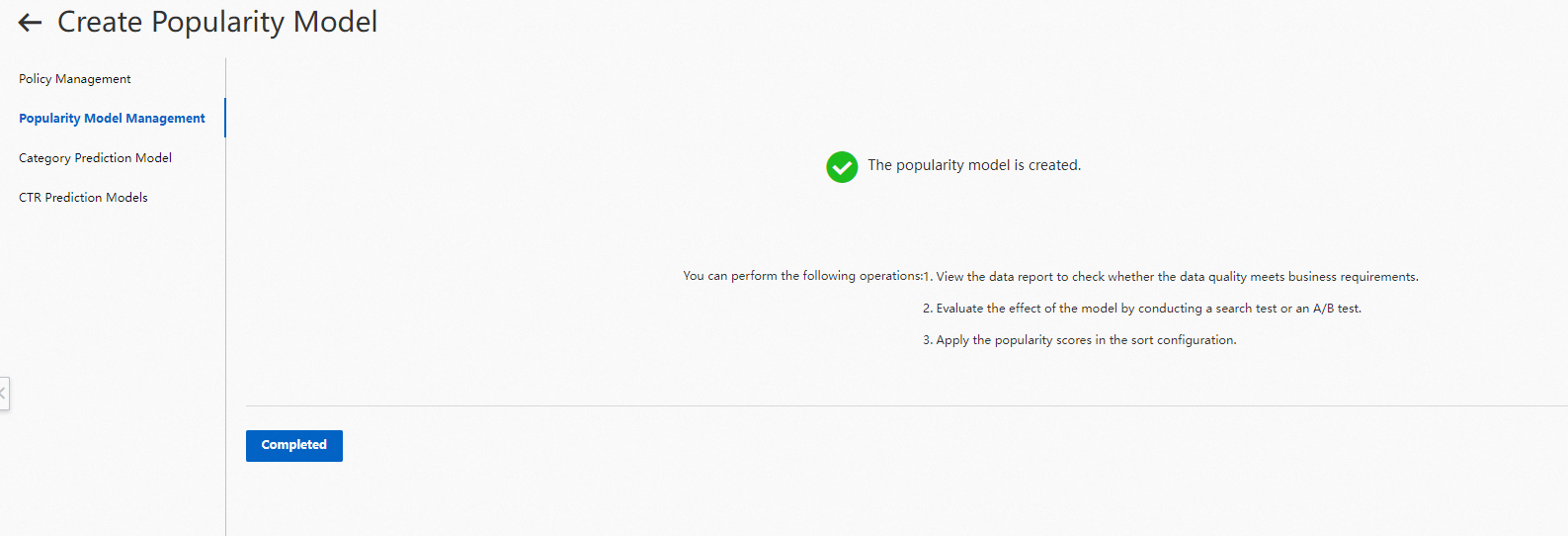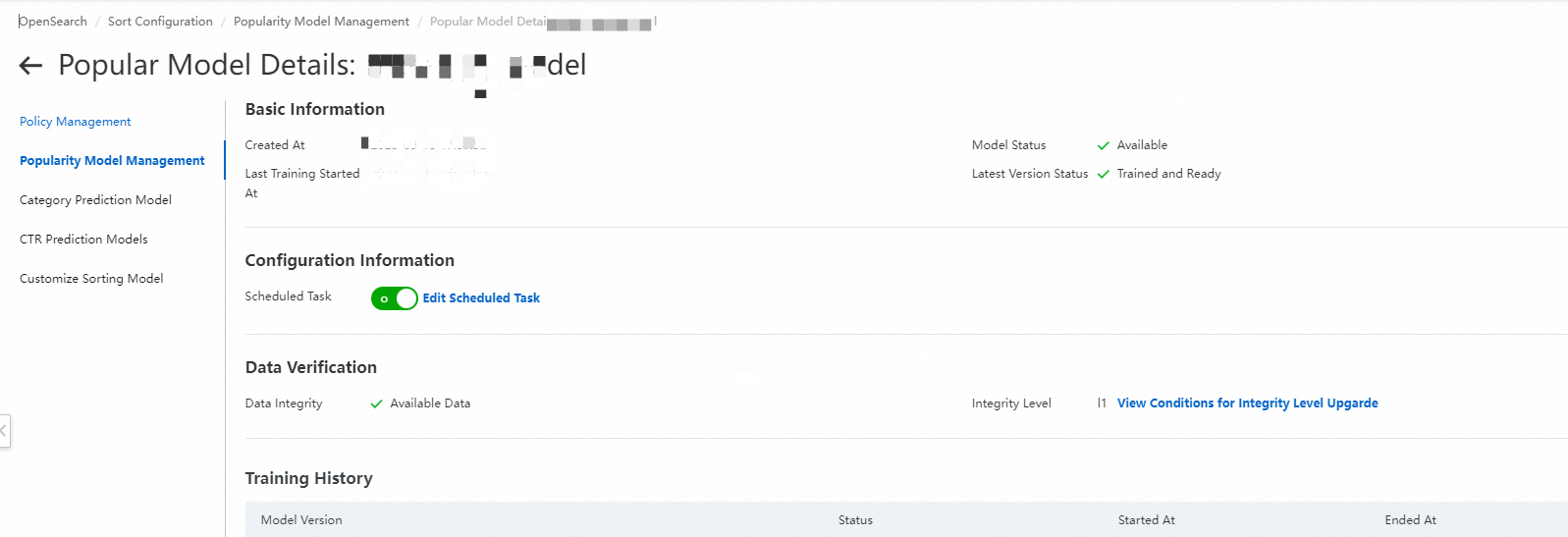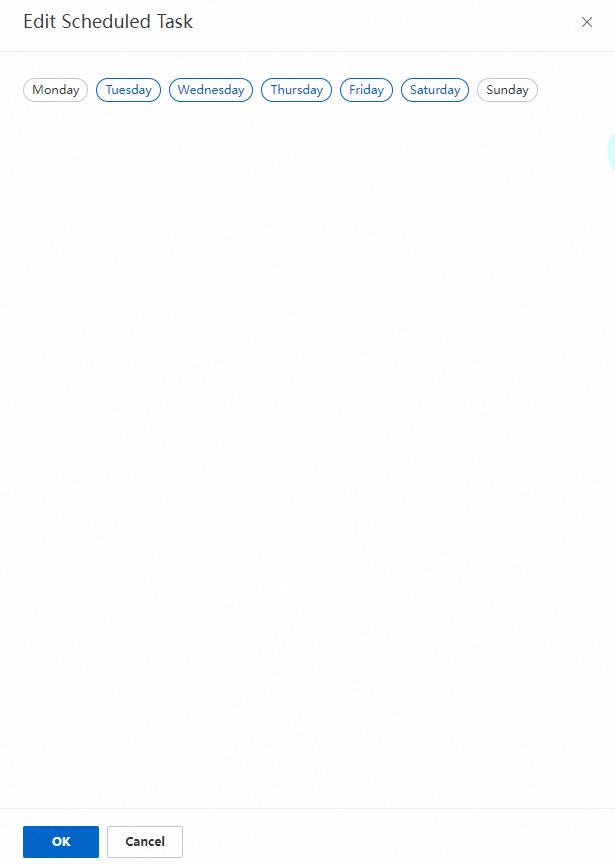人気モデルとは
人気モデルはオフラインコンピューティングに基づいています。ソートアルゴリズムを使用し、淘宝網の検索サービスの基礎として機能します。人気モデルは、各商品の静的な品質と人気を計算して数値化し、人気スコアと呼ばれる値にします。淘宝網の検索サービスから導入された人気モデルは、インデックス付きドキュメントの人気をモデルで計算できる非商品検索シナリオなど、他の検索シナリオにも適用されます。
モデル学習の特徴
エンティティディメンション:商品またはドキュメント、ブランド、販売者、リーフカテゴリ、レベル1カテゴリ。
期間ディメンション:1日、3日、7日、14日、30日、および時間減衰重み付け。
行動ディメンション:露出、クリック、お気に入りに追加、カートに追加、購入、コメント、いいね。
統計ディメンション:件数、顧客数、頻度、クリックスルー率、コンバージョン率。
各ディメンションの1つまたは2つの項目を使用して特徴を定義できます。人気モデルは、履歴データに基づいて特徴の値を計算します。たとえば、特徴は、過去1日(期間)以内に商品(エンティティ)が露出された回数(統計)、または過去30日(期間)以内に商品が属する販売者(エンティティ)の売上(行動と統計)などです。このように定義できる特徴の総数は、4つのディメンションのデカルト積です。
手順
モデルを作成します。
モデルを学習させ、データレポートを確認します。
人気スコアをソートポリシーに適用します。
注記:各アプリケーションは最大5つの人気モデルをサポートします。
人気モデルの作成
1. OpenSearchコンソールにログインします。左側のナビゲーションペインで、検索アルゴリズムセンター>ソート設定を選択します。ソート設定ページで、左側のペインにある人気モデル管理をクリックします。人気モデル管理ページで、作成をクリックします。

人気モデルの作成ページで、必要に応じてモデル名を入力し、送信をクリックします。

2. 送信をクリックすると、次のページが表示されます。人気モデル管理ページに戻ります。

3. 人気モデル管理ページで、作成したモデルを見つけ、アクション列の学習をクリックします。モデルの最新バージョンの状態がスケジュール中に変更されます。モデルが学習されるまで待ちます。

人気モデルの詳細
人気モデル管理ページ

基本情報セクション
このセクションでは、モデルの作成時間とステータス、最後の学習の開始時間、最新バージョンのステータスなど、人気モデルに関する基本情報を表示できます。

設定情報セクション
スケジュールされたタスク:デフォルトでは、このスイッチはオンになっており、モデルが1日に1回学習されることを示します。スケジュールされたタスクの編集をクリックして、カスタム学習サイクルを指定することもできます。


データ検証セクション
このセクションでは、利用可能なデータまたは異常なデータであるデータの整合性を表示できます。

現在のアプリケーションの整合性レベルを表示することもできます。次の表は、整合性レベルについて説明しています。
整合性レベル | 説明 | 整合性レベルのアップグレード条件 |
l0 | データは完全に利用できません。必要なコアフィールドが欠落しており、データサイズが小さいため、後続のデータ処理を実行できません。 | l1にアップグレード: 過去24時間の商品ページビュー(IPV)数が100を超えています。 |
l1 | データのコアフィールドが利用可能であり、モデル学習条件が満たされています。 | 該当なし |
APIとSDKのリファレンス:アルゴリズム周辺